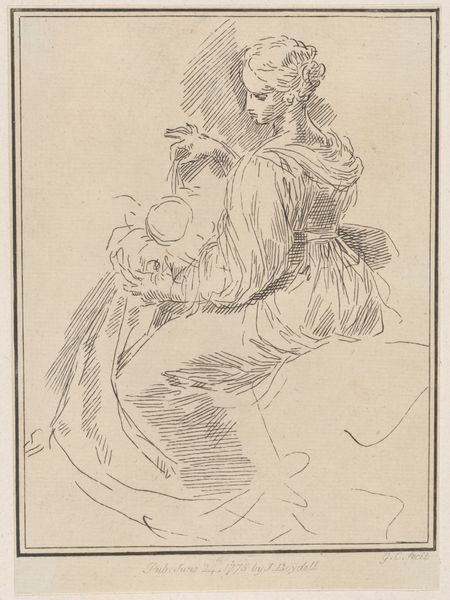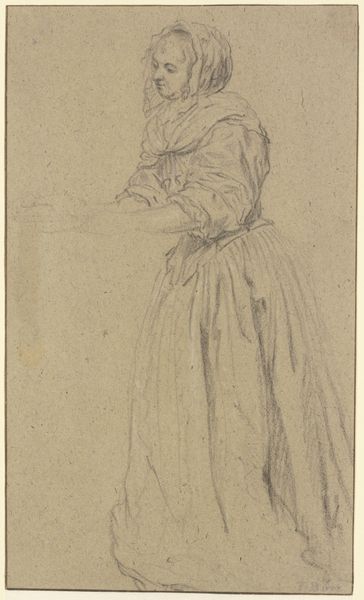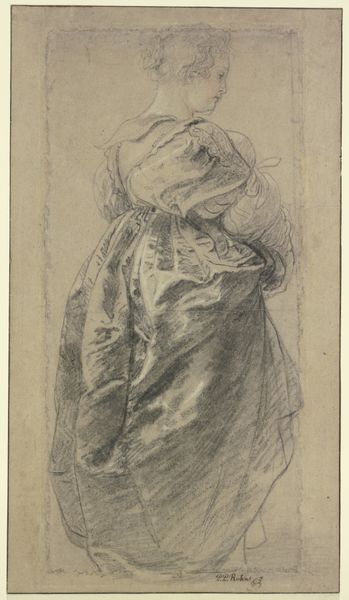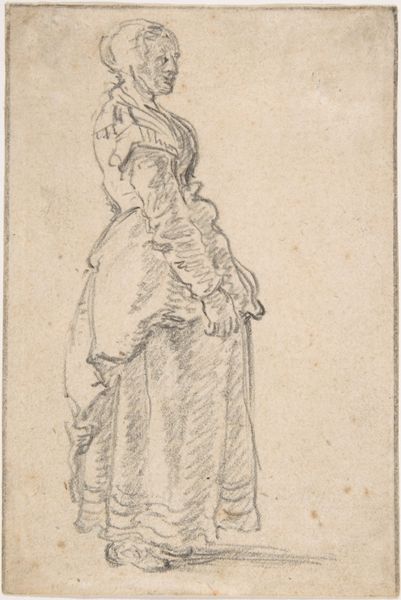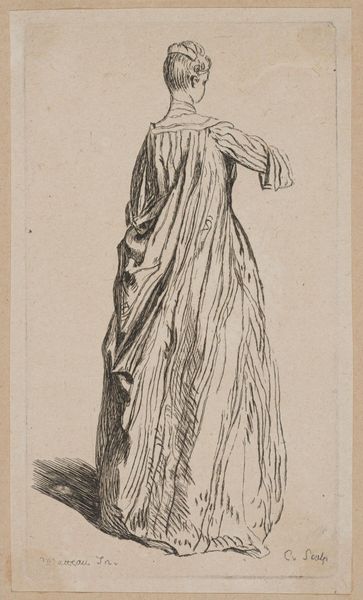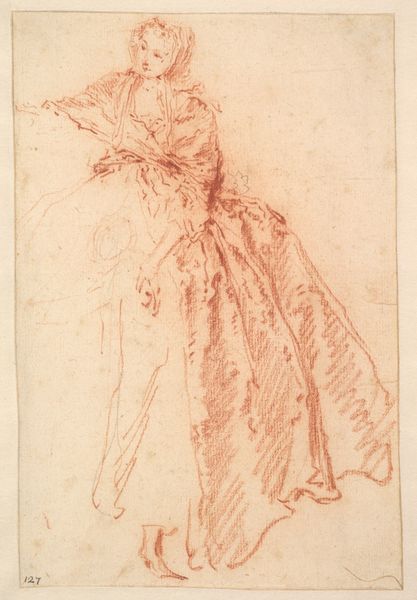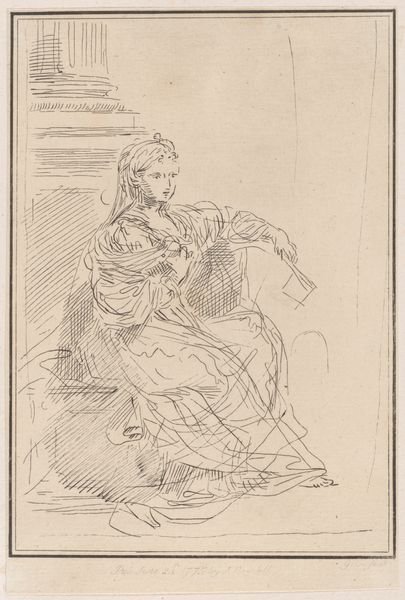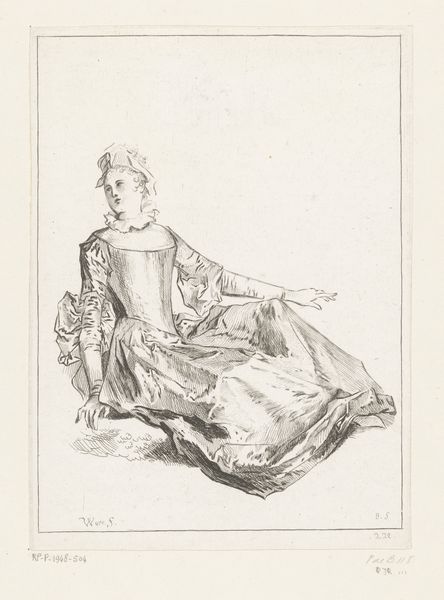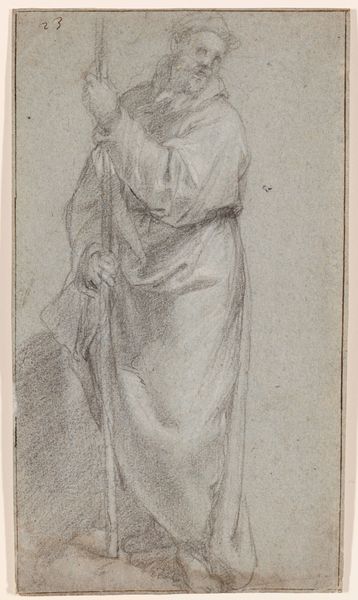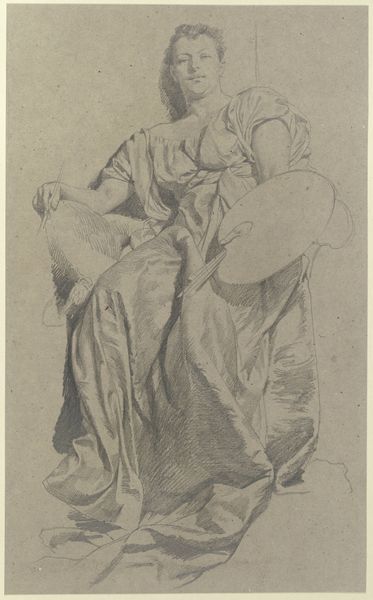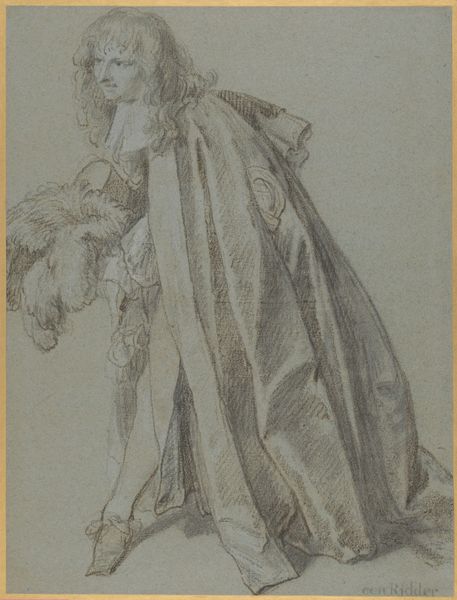
Dimensions: Sheet (Trimmed): 8 11/16 × 4 5/16 in. (22 × 11 cm)
Copyright: Public Domain
Curator: What strikes me immediately is the confident yet fluid linework in this pen drawing. Editor: Indeed. The artist, Giuseppe Canale, captured this "Woman standing holding a mirror" around 1775. It’s a superb example of Rococo portraiture held here at the Metropolitan Museum of Art. Curator: The pen strokes are incredibly expressive, almost like handwriting. The way the cross-hatching defines the shadows of the skirt – very dynamic. Notice how little ink the artist used to convey volume and light! It relies solely on formal elements to convey depth and form, especially her billowing gown. Editor: But that very act of using pen, the speed and immediacy that entails – it feels so connected to the material realities of production. Think of the specific tools Canale used: the quality of the ink, the surface of the paper, the precise movements involved in repeatedly applying pen to paper to mimic the lush style of painting at the time! Curator: Interesting observation. Semiotically speaking, though, the mirror itself acts as a signifier—a symbol reflecting themes of vanity, self-awareness, perhaps even the fleeting nature of beauty, typical motifs in Rococo art. Editor: And a luxury item accessible only to some segments of society! The very availability of that mirror is an index of social class. Who produces these reflective objects? What does labor look like across art objects and industries? Those factors shape this representation, no matter how stylized. The print format allowed these reflections of status to be more widely distributed as well. Curator: It is tempting to interpret this as simply an idealized depiction, focused more on aesthetic qualities than tangible concerns. Yet, by layering interpretations that go beyond aesthetic surface and touch upon deeper social narratives, that could enhance our experience. Editor: Exactly! Ultimately, a balanced understanding – acknowledging both the aesthetic intentionality of Canale’s artwork along with the context of 18th century manufacturing practices—enables a comprehensive reading of this elegant composition.
Comments
No comments
Be the first to comment and join the conversation on the ultimate creative platform.
